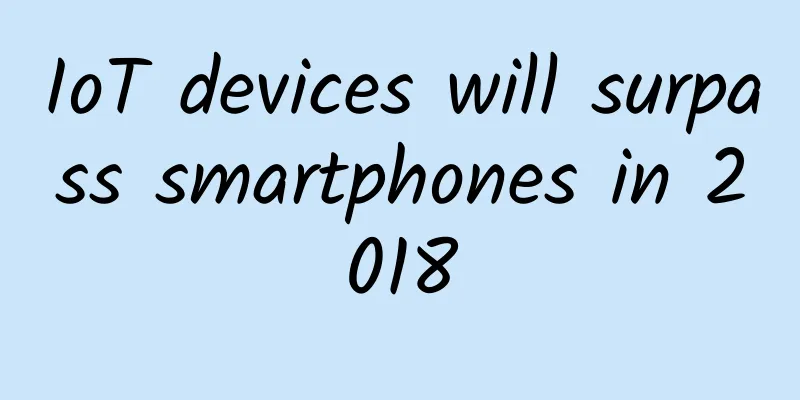IoT devices will surpass smartphones in 2018

|
In today's era, the hottest device in the hardware field is undoubtedly the smartphone, which is indispensable to everyone's life. But if you ask, who will be the owner of the throne in two years? Perhaps experts will tell you that the answer is the Internet of Things. The Internet of Things is an important part of the new generation of information technology and an important development stage in the information age. As a category, it will surpass smartphones in 2018. According to a report by telecommunications equipment manufacturer Ericsson, the global average annual compound growth rate of the Internet of Things has exceeded 23% since 2015, and this trend will continue until 2021. By 2021, there will be 28 billion devices connected to the Internet, of which 16 billion will be IoT devices. Another important reason is that 5G will also be popular and gradually replace 4G, and the new network system will drive more devices to connect. Authoritative sources believe that the commercial prospects of 5G are expected to become clearer by 2020. This year will mark a new milestone, with commercial LTE networks supporting peak downlink data rates of 1 Gbps. In the second half of the year, devices supporting 1 Gbps will first appear in the Japanese, American, Korean and Chinese markets, but will then quickly expand to other countries and regions. As the technology improves, mobile users will be able to enjoy faster browsing speeds, up to two-thirds faster than the fastest technology currently available. As a carrier for connecting different devices, the kinetic energy of mobile cellular networks cannot be underestimated. It is estimated that by 2021, the number of independent mobile users in the world will reach 5 billion. Experts believe that there will be two trends in the global IoT market in the future: ***, massive IoT connections, small traffic data and low operating costs are its characteristics. The required connections go directly to the wide area network via a public gateway. Second, critical connections in the Internet of Things, including "traffic safety, autonomous vehicles, industrial applications, manufacturing, and healthcare," are markets that are well suited for LTE technology, as the cost of sensors becomes cheaper and the cost and complexity of cellular devices using LTE modems decreases. According to statistics, mobile traffic will continue to grow, and North America continues to lead the smartphone traffic data market. In 2021, North American smartphone traffic usage will reach an average of 22GB per month, with video being the main factor driving traffic growth. The compound annual growth rate of mobile video has risen from the original estimate of 45% to 55%. |
<<: The fifth anniversary of Juhe, a data carnival for developers
>>: The dirty tricks ransomware uses to fool us
Recommend
Why do you spend so much money but the advertising effect is still so poor?
John, the founder of Ogilvy & Mather, express...
What should you eat and drink when you are infected with a virus and have a high fever?
With the change in epidemic policies, a large num...
Unexplained childhood hepatitis appears in many countries! What exactly is hepatitis?
Mixed Knowledge Specially designed to cure confus...
A day's plan begins in the morning... Do you eat? Authoritative research: Skipping breakfast can damage your body!
With the development of society, in the busy work...
Will the second wave of infection peak in March-May? Two groups of people may be most affected!
During the Spring Festival that just passed, ther...
If a tool app wants to transform, what should the operators do?
Meitu was cashed out by early-stage investment in...
What is the Himalayan tree line? What is its use?
Image source: Beijing Daily The alpine treeline, ...
If the whole of China was a class - in Gansu, all the classmates would be wearing the same clothes!
Students who have been to Gansu, can you guess wh...
Xiaolu Emotional Love Army "Love Finger Male Needle"
Baidu network disk download location: i1-72-Xiaol...
NVIDIA Titan Z first test: The dual-core king of cards is terrible
NVIDIA's dual-core GeForce GTX Titan Z has bee...
A long article to talk about overseas mobile traffic advertising monetization
There are more and more Chinese mobile developers...
Xiangxiang SEO Training: How to view the 404 page of the website?
Q: What do you think of 404? A: 404 means the pag...
All your privacy has been stolen! iOS 15 has a serious crash: data leaks on Apple devices
According to MacRumors, FingerprintJS, a browser ...
Although it is just a combination of "white, black, red and yellow", mistaking the colors can bring fatal disasters!
Attention! There are many pictures of snakes in t...









